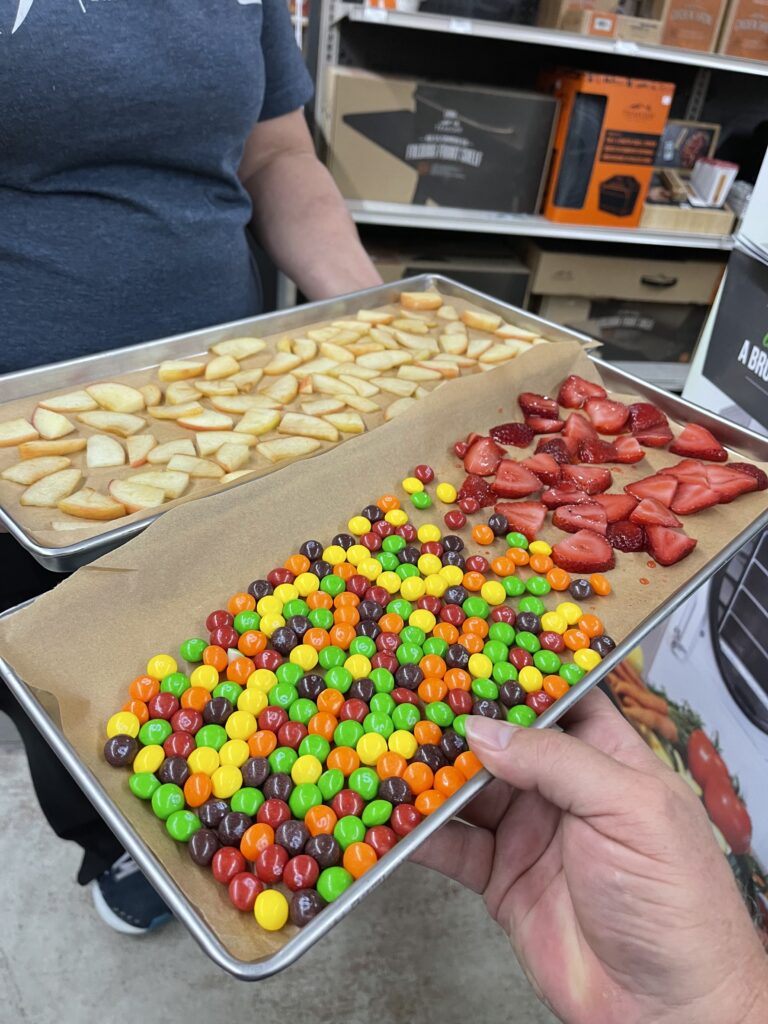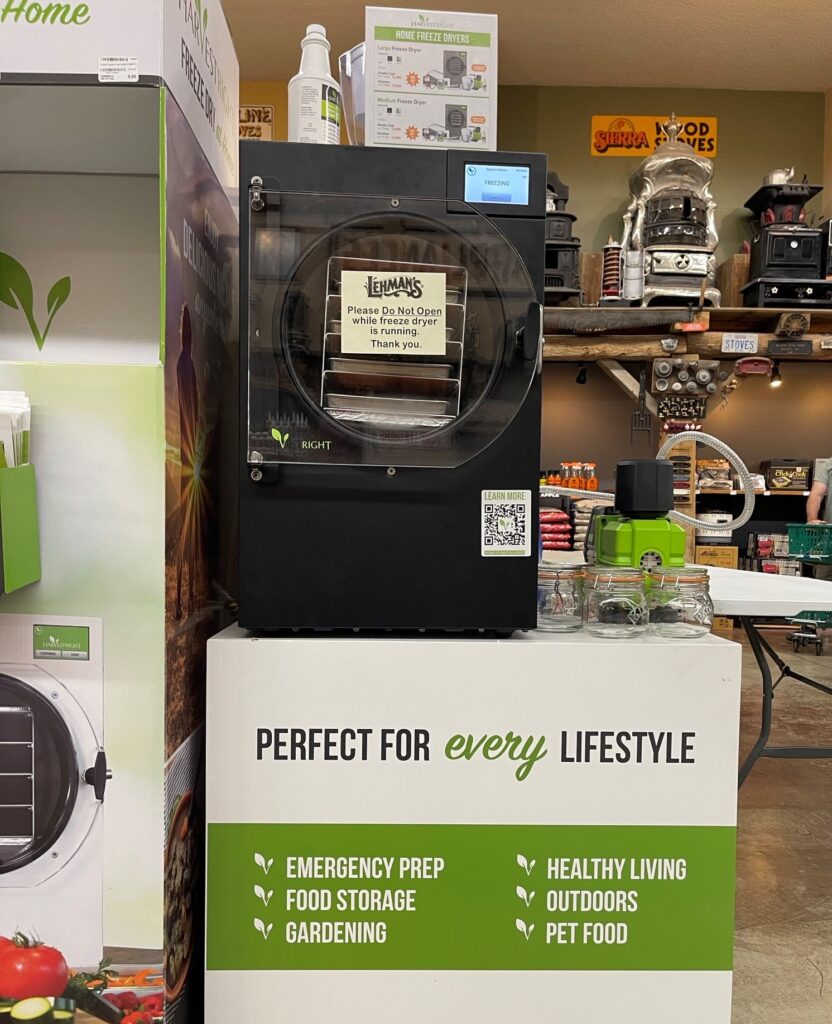Welcome to freeze drying!
Well, first of all, let’s look at the definition of freeze drying. It’s a verb which means to preserve (something) by rapidly freezing it and then subjecting it to a high vacuum. The process is quite simple, but I’ll get into that later.
With so many different ways of preserving food, from canning, pickling to dehydrating, why do people choose freeze drying? It’s a method of preserving food so that it’s shelf stable. Being shelf-stable means that freeze-dried foods can be stored in your pantry rather than the refrigerator. They can sit safely in the pantry for over a year and do not need to be cooked or refrigerated to eat safely. What makes freeze drying unique is that those foods can be stored safely for up to 25 years. Other methods of preserving food do not afford the longevity of freeze-dried foods. Additionally, freeze-dried foods retain up to 97% of their nutritional value. That’s much higher than any other form of preserving food.
Of course, not all foods are equal when it comes to freeze drying. Don’t worry though – it all comes down to prepping the various types of food to be freeze dried. Those fruits and vegetables that have a “skin” on the outside need to be opened up. Mostly, you just need to cut them in half so the moisture inside them can be pulled out. Some examples are blueberries, green beans, strawberries, bananas, peaches and many others. Foods that are denser, such as meats, will take longer to complete the process than others.

When you’re starting out in freeze-drying, you’ll be able to find so many resources to learn the best ways to handle each type of food to get the best results. I’ve learned a lot just from our customers, but there are social media groups devoted to freeze drying. You can spend all day reading up on the tips and tricks to freeze drying.
So, why freezee dry instead of canning, freezing, pickling or dehydrating? As I said earlier, freeze-dried foods are shelf stable for up to 25 years. It’s less labor-intensive than some of the other methods and you won’t have to devote nearly as much time to freeze-drying. Once the food is prepped, turn on the machine, follow the instructions on the screen and you’re off to your next project while the machine does all the work for you.
Here’s another tip for you. Since the machine will first freeze the food as soon as you put it in, you can freeze it for 24 hours or so and then put it in the freeze-dryer. This will help cut down on the amount of time the machine runs, and most likely, you’ve got a freezer handy in the kitchen or garage already.
Now that you know a little more about freeze drying, take the plunge and start your supply of shelf stable foods for your family. It’s easy, fun and the entire family can get involved, no matter their age. Enjoy!
































Does freeze drying eliminate botulism?
I’ve had my machine for 2 1/2 yrs. Have accumulated over 2yrs in of long term food storage between freeze drying, canning, long term sry goods
What is after freeze drying 101?
I was thinking freeze drying 101 must be a book to buy . So what’s freeze drying 101?
I live in Salt Lake City, where these are manufactured. While I don’t have one, I have aspired to get one for at least eight years! I have friends that have one, as well as my niece.
This would be the WISEST investment ANYONE could get! It’s SUPERIOR to canning! You can freeze-dry meals, such as leftover lasagna, etc, ice cream…there’s almost NOTHING one cannot freeze dry!!!
It’s how the astronauts have plenty of food with them on the International Space Station!
It’s not NEW science; it’s just that we finally have an appliance that homeowners can afford (although they aren’t cheap).
Freeze dried food, unopened, can last up to 25 years!!!
After freeze drying food , how do I store the food?
[…] are many ways to preserve food. Freezing, dehydrating, fermenting, canning, and freeze-drying are the most common options. All have their pluses and minuses. Pick a technique and perfect it. […]